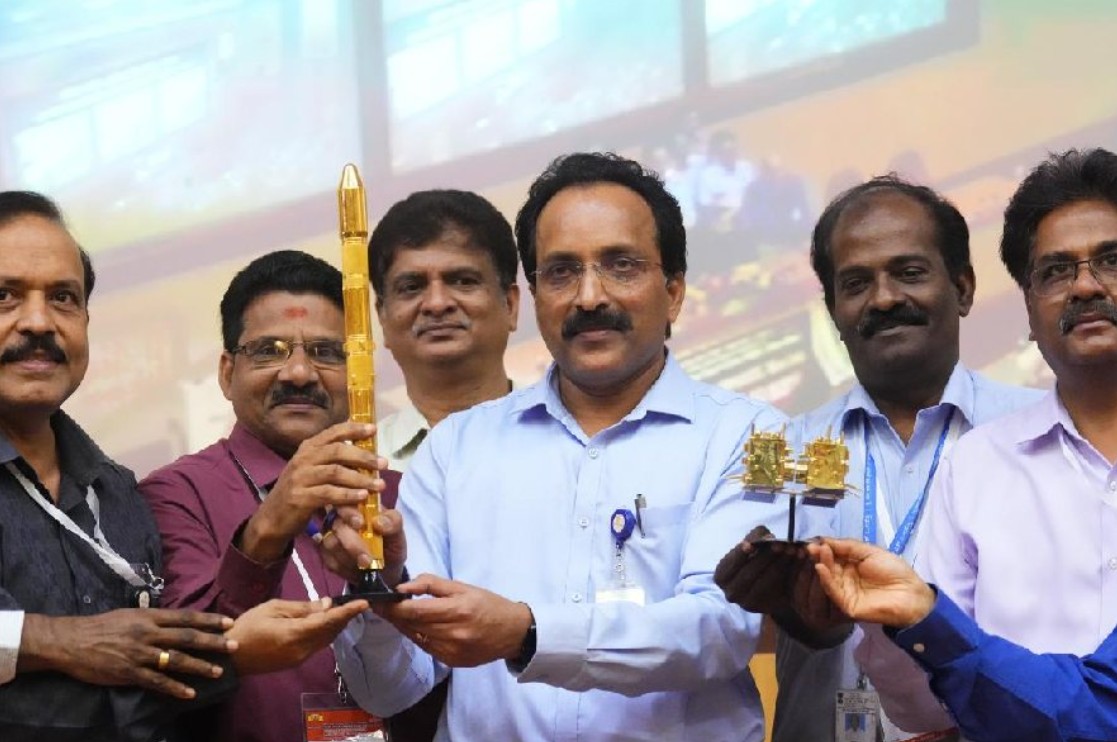ISRO chief announced The upcoming GSLV mission in January is set to mark the 100th launch from India’s spaceport at Sriharikota.
The upcoming GSLV mission in January is set to mark the 100th launch from India’s spaceport at Sriharikota, as announced by the ISRO chief.
After the successful ISRO‘s PSLV-C60 mission, which placed the Space Docking Experiment (SpaDeX) spacecraft A and B into orbit, ISRO Chairman S. Somanath announced that the organization is preparing for a major milestone in January 2025. A Geosynchronous Launch Vehicle (GSLV) mission will take place in January, marking the 100th launch from the Sriharikota spaceport
Somanath highlighted the significance of this achievement, saying, “We’ve just seen the impressive lift-off of the SpaDeX rocket, and this marks our 99th launch from the Satish Dhawan Space Centre.
The 100th launch is scheduled for early next year.” He also mentioned that 2025 will be a year filled with exciting missions, starting with the GSLV launching the NVS-02 navigation satellite in January.
Monday’s PSLV-C60 mission is a significant step towards more advanced docking experiments, with ISRO Chairman S. Somanath stating, “We will see more complex versions of SpaDeX missions, including advanced docking systems in the future.”
Looking ahead, ISRO’s ambitious plans for 2025 include the launch of the NVS-02 navigation satellite using a GSLV rocket in January. This mission follows the successful deployment of the NVS-01 satellite in May 2023, which was the first of the second-generation satellites for India’s NavIC navigation system.
The PSLV-C60 mission, originally set for 9:58 PM on December 30, was delayed to 10 PM due to a “conjunction study.” This study ensures that there is no risk of satellites coming too close to each other in orbit. Somanath explained, “If satellites are found to be in close proximity, we adjust the timing of the launch—either delay it or move it forward—to avoid any potential issues.”
PSLV-C60 mission – A Significant step of ISRO
The PSLV-C60 mission marked a key milestone for ISRO as it successfully launched two spacecraft into a circular orbit for the Space Docking Experiment (SpaDeX). “As you’ve witnessed the spectacular lift-off and launch of the SpaDeX rocket, this also represents our 99th launch from the Satish Dhawan Space Centre, making it a significant achievement,” said Somanath.
Also Read- The ISRO PSLV-C60 SpaDeX mission has been rescheduled and will now take place at 10 PM tonight.
ISRO’s Upcoming Missions and Future Plans
Dr. Somanath outlined some exciting plans for ISRO in 2025, with several important missions on the horizon. He said, “In 2025, we have many missions lined up, starting with the GSLV mission that will launch the NVS-02 satellite in January.” These upcoming missions will help strengthen India’s position as a global leader in space technology.
The recent PSLV-C60 mission, which carried 24 diverse payloads, highlights the increasing collaboration between ISRO, academic institutions, startups, and private companies. These payloads, contributed by both ISRO and external partners, reflect India’s expanding role in the global space research community.
ISRO’s Past Achievements
ISRO (Indian Space Research Organisation) has made remarkable strides in space exploration and technology since its inception in 1969. By 2024, ISRO had established itself as one of the leading space agencies in the world, known for its cost-effective and innovative missions. One of its earliest milestones was the launch of Aryabhata in 1980, India’s first satellite, which marked the country’s entry into space. The Chandrayaan-1 mission in 2008 made global headlines with the discovery of water molecules on the Moon, cementing India’s role in lunar exploration.
In 2013, ISRO achieved an incredible feat by successfully launching the Mars Orbiter Mission (Mangalyaan), making India the first Asian country to reach Mars and the fourth space agency globally to do so. In 2014, the PSLV-C25 launched Mars Orbiter Mission, showcasing ISRO’s capability to execute complex interplanetary missions on a budget.
ISRO’s Chandrayaan-2 mission in 2019 aimed for a soft landing on the Moon, furthering lunar exploration, though the lander faced challenges. Moreover, ISRO’s commitment to providing satellite services has been demonstrated through the GSAT and NavIC programs, which have expanded India’s communication and navigation capabilities.
By 2024, ISRO continues to develop ambitious missions, including future lunar, interplanetary, and space station projects, securing India’s place in the global space race.
Also Read-
Delhi Chokes- AQI above 300, Urgent Steps to Tackle Severe Air Pollution
